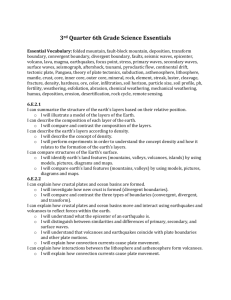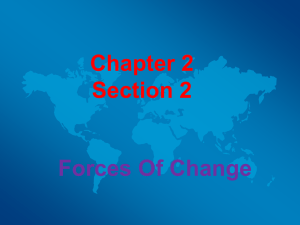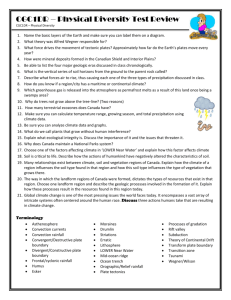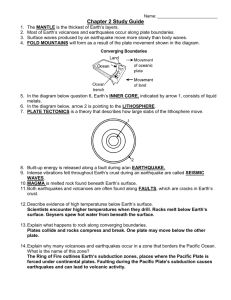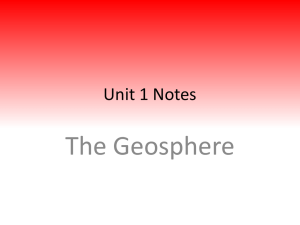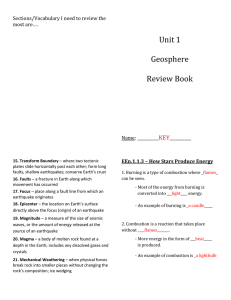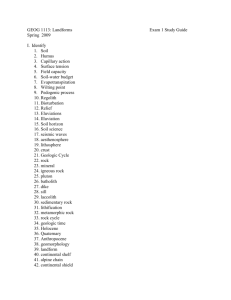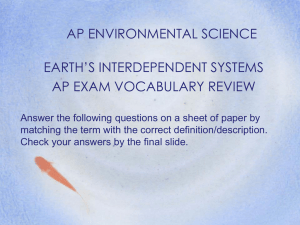UNIT 1 – The Geosphere STUDY GUIDE
advertisement
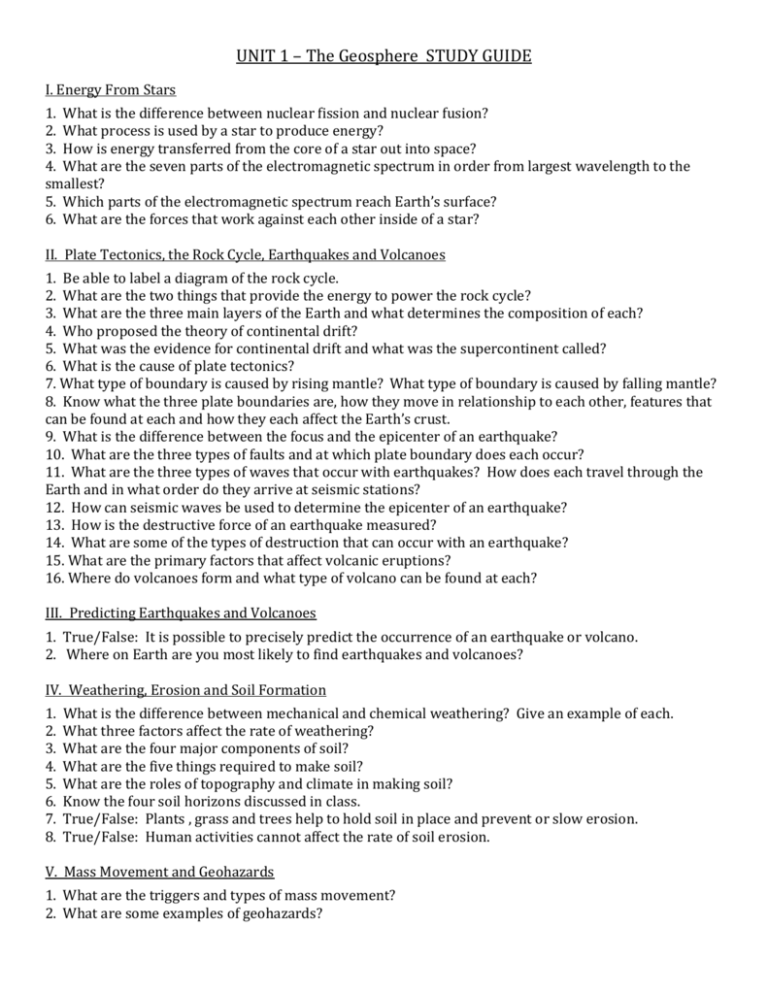
UNIT 1 – The Geosphere STUDY GUIDE I. Energy From Stars 1. What is the difference between nuclear fission and nuclear fusion? 2. What process is used by a star to produce energy? 3. How is energy transferred from the core of a star out into space? 4. What are the seven parts of the electromagnetic spectrum in order from largest wavelength to the smallest? 5. Which parts of the electromagnetic spectrum reach Earth’s surface? 6. What are the forces that work against each other inside of a star? II. Plate Tectonics, the Rock Cycle, Earthquakes and Volcanoes 1. Be able to label a diagram of the rock cycle. 2. What are the two things that provide the energy to power the rock cycle? 3. What are the three main layers of the Earth and what determines the composition of each? 4. Who proposed the theory of continental drift? 5. What was the evidence for continental drift and what was the supercontinent called? 6. What is the cause of plate tectonics? 7. What type of boundary is caused by rising mantle? What type of boundary is caused by falling mantle? 8. Know what the three plate boundaries are, how they move in relationship to each other, features that can be found at each and how they each affect the Earth’s crust. 9. What is the difference between the focus and the epicenter of an earthquake? 10. What are the three types of faults and at which plate boundary does each occur? 11. What are the three types of waves that occur with earthquakes? How does each travel through the Earth and in what order do they arrive at seismic stations? 12. How can seismic waves be used to determine the epicenter of an earthquake? 13. How is the destructive force of an earthquake measured? 14. What are some of the types of destruction that can occur with an earthquake? 15. What are the primary factors that affect volcanic eruptions? 16. Where do volcanoes form and what type of volcano can be found at each? III. Predicting Earthquakes and Volcanoes 1. True/False: It is possible to precisely predict the occurrence of an earthquake or volcano. 2. Where on Earth are you most likely to find earthquakes and volcanoes? IV. Weathering, Erosion and Soil Formation 1. 2. 3. 4. 5. 6. 7. 8. What is the difference between mechanical and chemical weathering? Give an example of each. What three factors affect the rate of weathering? What are the four major components of soil? What are the five things required to make soil? What are the roles of topography and climate in making soil? Know the four soil horizons discussed in class. True/False: Plants , grass and trees help to hold soil in place and prevent or slow erosion. True/False: Human activities cannot affect the rate of soil erosion. V. Mass Movement and Geohazards 1. What are the triggers and types of mass movement? 2. What are some examples of geohazards? 3. What are some examples of things that can be done to help protect lives and property from a geohazard? Label the parts of the Rock Cycle Label the boundary type



